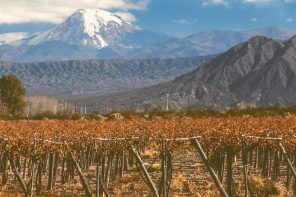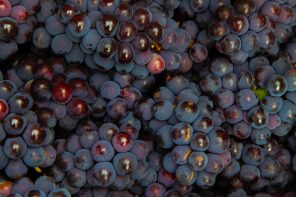Over the past few years, you may have noticed a new emblem on the back of your favorite coffee brand. And then maybe in the corner of a chocolate bar. Suddenly, it has appeared on all types of goods, from tea and spices to – you guessed it – wine.
When we buy a wine listed as Fair Trade Certified, our dollar has an impact that creates a ripple effect, reaching all the way from the consumer down to the grape harvesters. However, to understand how fair trade works it’s crucial to understand the past and why fair trade was created in the first place.
Typically, in New World wine countries like Argentina, Australia and South Africa, farming is quite different from Old World regions. These New World regions can have harsher conditions making it harder for grapes and other products to grow – and climate change is only making things worse. Add low wages to these hard working conditions and it becomes nearly impossible for winemakers and harvesters to make ends meet.
In Chile, co-operatives in grape growing and winemaking went bankrupt causing farmers to struggle with poverty and low wages. Apartheid in South Africa didn’t allow the sales of wine to expand beyond their country. Along with poor labor conditions, these economic and political plights caused a host of problems for farmers.
Back in 2003, wine became one of the products included in Fairtrade International, the group that regulates the standards of what it means to operate as Fair Trade Certified. These standard regulations have been set in place to ensure the livelihoods and well-being of everyone involved in the winemaking process, as well as to protect the environment.
In order for a farmer to have a Fair Trade Certified product, they must apply for a certification through FLO-Cert, which stands for Fairtrade Labeling Organization Certification. FLO-Cert is the organization that ultimately decides whether a farmer and their product can become Fair Trade Certified based on whether or not a farmer is complying with the Fairtrade International standards. So basically a farmer has to be in compliance with Fairtrade International’s standards before they can apply.
After an application is submitted and the farmer passes FLO-Cert’s review (which takes about 30 days), an audit by FLO-Cert ensues. An audit normally consists of site visits and face-to-face meetings, interviews with unions and farmers and checking financial documents. After FLO-Cert reviews the audit, the group decides whether to certify the farmer or whether the farm needs to make changes.
The economic standards that Fairtrade International sets and regulates is an equitable market price of wine coming from each region; however, each region does have a different minimum price considering the cost of living, business in each and cultivation method (organic wine will have a higher minimum because the method costs more to produce). So, farmers must sell their wine at a certain price in order to comply with the standard.
Through these market price regulations, farmers meet their price of production, have a stable income and pay their employees with fair wages. Fair trade standards are in accordance with the International Labour Organization Convention, so farmers cannot use child labor, force overtime and cause harassment. Additional funds also go directly to smallholder grape farmer organizations and plantation workers’ groups to help their communities with resources for education, sanitation and health care.
Besides ensuring workers rights, fair trade also protects the environment. Fair Trade USA states, “Fair Trade Certified environmental standards are some of the strictest in the world.” With such strict guidelines farmers don’t have to compete using environmentally unsafe agricultural practices. Instead, they are empowered with resources for organic conversion, reforestation, water conservation, financial incentives and environmental education. Fair trade grapes are grown sustainably without harmful pesticides and because farmers have sufficient funds, they can allocate money to learning new techniques and practice sustainable farming methods.
While taste testing a Fair Trade Certified wine against one of its competitors from an Old World region, the label is sure not to affect the quality and attributes that make a wine a great pour. The space Fairtrade International creates for small-scale producers allows new and unique wines to be enjoyed around the world because it’s now sold in over 130 countries with South Africa ringing in as the top producer globally. If anything, fair trade wine will only expand your interest for New World wines, so explore the world one glass at a time, while also helping to make a sustainable difference.








